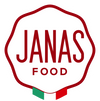Mullet roe, what it is and how to use it

A salty taste, the scent of the sea and a colour ranging from gold to amber make Mullet roe a refined speciality, also known as "Sardinian caviar", ideal to enjoy with seafood dishes, accompanied by the island's excellent white wines. A tradition that has been rooted in Sardinia for 3000 years and is now famous all over the world, enriching starters and first courses, making salads more precious and stimulating the imagination of gourmet cuisine enthusiasts. The most prized is the botargo produced from mullet caught in the Cabras Pond (Oristano), which can cost up to 250 Euros per kilogram.
What is mullet roe?
Mullet roe is a food obtained by drying the egg sac of the mullet. In other words, the eggs are salted and dried into golden baffas with an intense taste of the sea. Mullet roe is eaten either sliced, more or less thinly depending on preference, or minced and sprinkled on croutons or pasta dishes. Its strong flavour is not to everyone's taste, but those who fall in love with it remain loyal fans. It is not difficult to understand why: a mixture of sweetness, savouriness and creaminess makes this delicacy inimitable among other seafood products.
Origins of botargo
It is said that the botargo tradition arrived in Sardinia around 3000 years ago, thanks to the Phoenicians, the first colonisers of the island. Since then, the areas of greatest production have been those closest to their settlements along the coast (Nora, Cagliari, Tharros and Sulcis). The name 'Bottarga' is said to derive from 'battarikh', a term used by the Arabs to refer to this precious delicacy which, until recently, was difficult to find and reserved for gifts and special occasions.
Today, thanks to the work of producers and improved fishing techniques, the market for Mullet roe is much more prosperous and this product is exported (and often copied!) all over the world.
 |
How Botargo is madeThe process of making Botargo begins with the fishing, in the summer season, of mullets with eggs of the ideal size for production. Thanks to the pureness of the water and the characteristics of its seabed, the area considered to be the best for growing mullet is the Cabras Pond in the Oristano province. After the fish have been caught, the egg sac is extracted by hand so as not to damage the film enclosing the eggs. This phase is very delicate because, if the raw material is damaged, it will no longer be possible to process it and obtain the food we all know. The next phase is salting: after washing in water and ice, the baffas are sprinkled with salt and kept like this for some time. They are then washed one by one, pressed and hung up to begin the actual drying phase. During the drying process, the mullet roe is left in the dark for two or three days, which results in a product with a typical aroma. |
Curiosity about Mullet roe botargo:
One way to recognise a good quality Botargo is to pay attention to the presence or absence of the so-called "Nail" (or "su biddiu" in Sardinian), a small piece of tissue that joins the eggs to the navel of the fish. The "Nail" is a guarantee of quality because it is left in the baffa when it is extracted from very fresh mullets and its processing is carried out with the utmost care.
Buy Mullet roe Botargo online! Choose from Ground Botargo or Botargo in Baffa!
How to use Botargo in recipes
There are so many recipes in which you can use botargo. The most famous are the classic Spaghetti with Botargo, Fregola, artichoke salads, but Botargo is also excellent on croutons, in combination with dairy products for a tasty appetizer, or to enhance a simple pasta dish with butter or oil.





